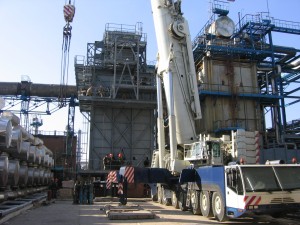Refinery processing involves processing hydrocarbon streams to as high as 1400°F (760°C) during processing, making furnace reliability an important aspect of refinery operations. More importantly, furnace tube metallurgy is exposed to temperatures close to 1750°F (950°C). Furnace tube degradation occurs primarily due to corrosion, metallurgical changes and creep.
Furnace tube failures occur primarily due to creep. Creep is the time-dependent deformation occurring when tube metallurgy is subjected to stress (internal pressure) at elevated temperatures. For example, unscheduled coker outages due to furnace tube failures are costly within the unit as well as throughout the refinery. This is because the entire refinery can be impacted due to reduced crude processing rates or adjustments to crude blends if the coker must be shut down or operated at reduced capacity.
The coking process temperature is about 950°F (510°C) and 9Cr-1Mo tubes in a coker furnace typically are heated to a maximum of 1250°F (705°C) when coked.Therefore, being able to predict furnace tube life is essential to maintaining refinery furnace reliability and refinery profitability. Fortunately, creep can be simulated and the simulation used to predict what will occur in the future –the remaining life of a furnace tube. There is a general trend, according to “show of hands” survey at a recent AFPM Q&A that periodic infrared (IR) scans are being used more often to help monitor tube metal temperatures and check for hot tubes and hot spots. Periodic IR scans ensure that the tubes monitored are representative of furnace conditions.
One response to “Preventing Furnace Tube Failures”
Leave a Reply
You must be logged in to post a comment.








For additional insight and discussion about furnaces, you can hear Patrick Bernhagen (Amec Foster Wheller) speak on “Design Improvements for Older Single Fired Delayed Coker Heaters”
at RefComm® Galveston May 4-5 2016. https://refiningcommunity.com/refcomm-galveston-2016/
Many older delayed coker heaters are of single fired design and had been operating for many years without major issues, until certain operational changes were made whether it be feed changes, capacity creeps, heat optimization of preheat train, or emission requirements to name a few.
His presentation will address some of the current design features that can be incorporated into the older designs to improve coker operations.
Topics discussed include tube sizes and variation in diameters within a pass, Cold Oil Velocity upper and lower limits, steam and or condensate injection, on-line spalling, radiant box geometry, Lo NOx burners and the various varieties thereof. Some present and past solutions provided as case studies.